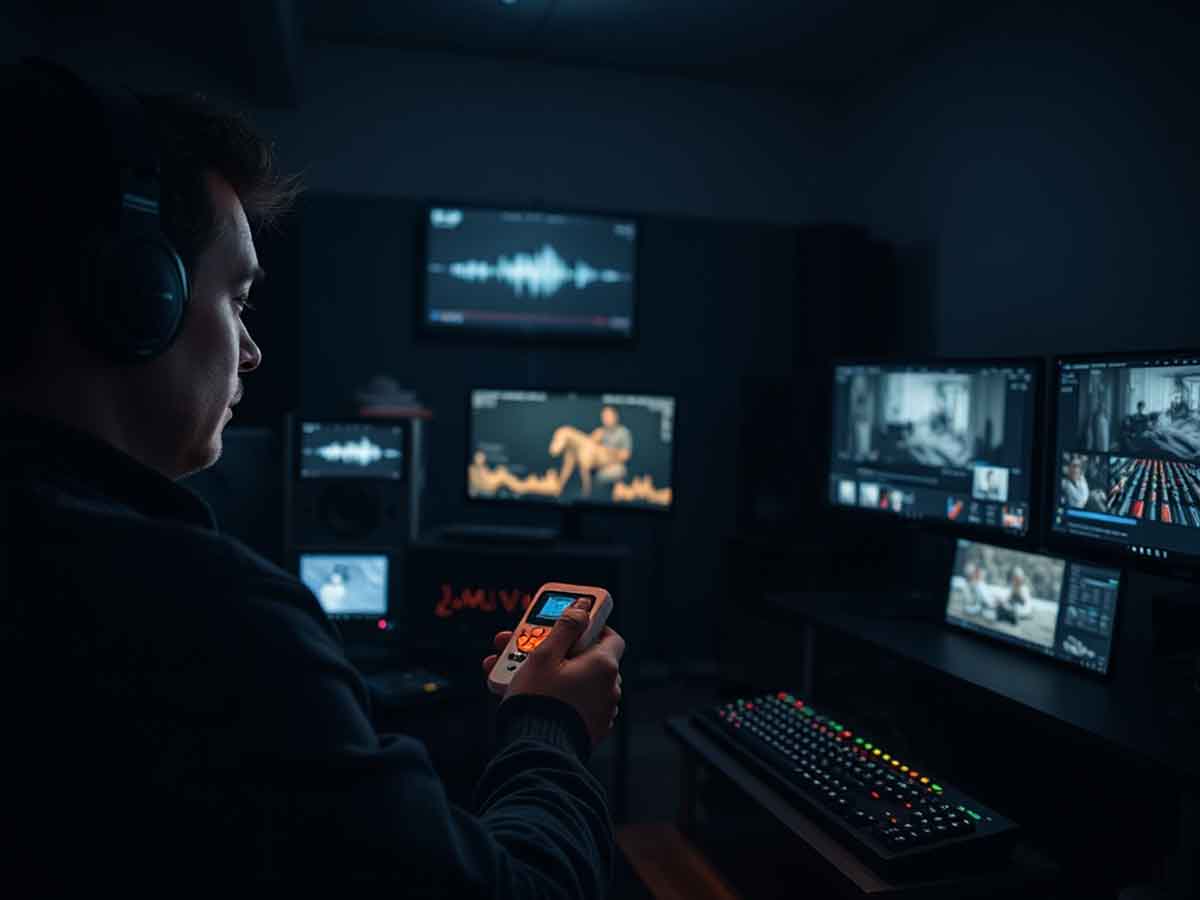Catching the Exact Frame: How to Use Precision Timing Tools in Gaming
Millions of gamers, streamers, and content creators aim to capture the perfect moment—a slick play, a last-second win, or a hilarious glitch. But when the timing doesn’t align between the recording and the actual gameplay, the impact is lost. This is where precision timing tools become essential. From e-sports arenas in Seoul to speedrun events in Frankfurt, one demand remains constant: accurate timestamps for every single frame.
• Precision tools offer frame-level accuracy, making it easier to revisit exact moments.
• Streamers, professional players, reviewers, and editors benefit from quick and accurate clip retrieval.
• With proper setup, missed moments are avoided and post-production becomes much faster.
Why Timing Matters in Competitive Gaming
In many matches, a single frame can be the difference between winning and losing. When a pro player lands a one-frame combo, the arena reacts instantly. The same goes for strategy games, where a team can win or lose based on perfectly timed defensive actions. Every moment matters—just one second off, and the entire story changes.
Even casual gamers uploading clips on social media benefit. If your capture device delays by 10 seconds, your highlight may be cut off or extended awkwardly. This affects viewer engagement. To grow an audience that appreciates your work, time accuracy on every clip is vital.
For media platforms, timestamp accuracy is critical when reporting speedrun records or new gameplay techniques. If the time is incorrect, the report’s credibility suffers. A clip synced with a tool that logs precise inputs or glitches is more reliable. During tournaments, referees also use these tools to verify disputes involving match timers.
Understanding Precision Timing Tools
Not all tools are built the same. Some are basic timestamp overlays, while others are high-end recorders that sync directly with the game engine. Most professionals look for three key features:
Frame-Level Capture: This logs exact times for every frame, not just every second.
Auto-Timestamp Bookmarking: It adds markers for key events like kill streaks or best lap times.
Overlay Sync Output: It aligns game visuals, audio, and camera feeds for seamless editing.
With all three features under one system, creators no longer need to manually sort through clips. Simply choose a marker, drag it into the timeline, and export. This efficiency benefits studios in Tokyo, New York, and São Paulo who publish highlight reels minutes after a match ends.
Different Users, Same Benefit
Streamers and Content Creators
Live platforms don’t always offer instant clip saving. When a game-changing comeback happens, going back through the video can take time. But with a precision tool, one click on the marker grabs the last 30 seconds. This speeds up editing for platforms like TikTok or Shorts.
Professional E-sports Players
Coaches spend over 12 hours weekly reviewing matches. With accurate tags, they can filter for “team fight initiations” and study patterns quickly. This helps in developing better training sessions without wasting time searching through entire replays.
Game Analysts and Casters
During live events, producers manage the replay system. When a caster asks for a replay of a play at 19:47, the tool pulls it up instantly. This keeps broadcasts smooth and keeps audiences engaged.
Building Your Timing Workflow
1. Align Your Capture Settings
Before playing, match the game’s frame rate with your recording software. If your monitor is running at 120 FPS, set the recorder the same. This prevents dropped frames that can ruin the accuracy of timestamps.
2. Link Event Triggers
Many tools allow setting hotkeys to tag events. For example, F9 can tag a kill, and F10 an objective capture. Organized tagging helps filter moments after a session. With more resources, some even integrate the game’s API to automate event tagging.
3. Separate Audio Tracks
Keep voice chat on a different track from the game audio. This helps in reviewing communication between teammates and also makes it easier to mute unwanted noise during editing without affecting time alignment.
4. Export Consistent Metadata
After a session, export metadata as JSON or XML. Editing software like DaVinci Resolve and Premiere Pro can read this directly. No need for manual entry, which saves time in the editing process.
Real-World Use Cases
Fighting Game Scene
At Evolution Championship Series in Las Vegas, bracket resets often happen due to frame-perfect plays. With these tools, referees have verified exact ten-frame windows for key moves, preventing confusion and promoting fair judgment.
Speedrun Events
At Games Done Quick in Stockholm, every run is timed with precision. If an exploit like load-skipping is suspected, the crew can review the timestamped footage instantly. This ensures transparency and fairness.
MOBA Finals
During the Worlds in Seoul, a surprise backdoor ended the game within seconds. Analysts used the marker to explain how item spikes and cooldowns lined up. Press room responses were positive, appreciating how clearly the moment was explained.
Racing Sim Tournaments
At Silverstone, Formula Sim Racing uses timing overlays linked to telemetry. When two cars collide, the system tags it instantly. Race directors can then check footage and determine responsibility—even during live events.
Strengths and Limitations
While the benefits are clear, it’s important to understand a few drawbacks. High-speed SSDs are often required, and premium capture cards can cost thousands. However, prices are falling as the technology becomes more widespread. Independent streamers now have access to systems previously reserved for large studios.
There’s also a learning curve. While most tools are user-friendly, configuring them properly still takes time. Thankfully, communities on forums and Discord offer support. In just a few days, new users can master the setup and improve their own editing style.
Comparison with Other Methods
Some games offer built-in replay buffers. These are convenient but often limited by the game’s supported resolution and frame rate. For cinematic trailers or high-quality uploads at 4K 60 FPS, a dedicated system still outperforms. It captures raw data, allowing cleaner color grading and motion effects during post.
How AI Assists Without Taking Over
Although full AI-generated content is not accepted in most e-sports productions, machine learning helps improve usability. Some tools detect killfeed text and automatically add a marker. It counts pixels and identifies shapes to recognize game events, removing the need for manual input.
Still, the final editing decision belongs to humans. Algorithms can’t always grasp the context of a feint or a throw. Editors review and decide what clip deserves airtime.
Hardware Adjustments for Higher Demands
As 240 FPS monitors become common, file sizes also grow. NVMe drives with over 3 GB/s speeds are needed to prevent bottlenecks. Studios in Berlin and Vancouver rely on RAID setups for backup and speed. Smaller teams save up for external capture devices with built-in encoders to ease the load on main PCs.
Keeping everything in sync is also vital. Most setups use word-clock signals to keep audio and video aligned. This prevents issues like delayed commentary.
Platform-Specific Publishing
Once a clip is ready, it needs to be exported correctly for each platform. YouTube and Bilibili have different bitrate requirements. With timing tool metadata, creators can generate automatic chapters for long videos. Viewers in Barcelona or Johannesburg can skip to the best parts instantly.
Some tools even allow direct upload. With an API key, publishing takes one click. This avoids upload errors and makes rapid post-match updates possible.
Archiving for Long-Term Use
Uploading is not the final step. In top teams’ performance labs, researchers analyze thousands of game hours for reaction patterns. With frame-accurate timestamps, they can graph peak performance by time of day. Other sports like cricket and football use similar systems for training.
Starting Out: What Beginners Should Know
If you’re just beginning, try free tools with basic features first. Invest in a good SSD and microphone before buying expensive gear. What matters most is the clarity of your story—not the price of your setup. A strong narrative can attract viewers, even if your first video is in 720p.
Tagging every second may sound technical, but it forms the backbone of professional gaming content. Whether it’s a game-winning move or a perfect drift, timing tools help present it clearly. With the right setup, your editing becomes smoother, your content shines brighter, and your audience grows—wherever they are in the world.



